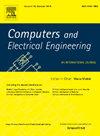Multi-focus image fusion with visual state space model and dual adversarial learning
IF 4
3区 计算机科学
Q1 COMPUTER SCIENCE, HARDWARE & ARCHITECTURE
引用次数: 0
Abstract
In recent years, the two-stage multi-focus image fusion (MFF) method, which utilizes neural networks to first generate decision maps and then calculate the fused image, has witnessed significant advancements. However, after supervised training, many networks become overly reliant on semantic information, making it challenging to discern whether homogeneous regions and flat regions are in focus or not, as these regions lack distinct blur cues. To alleviate this issue, this paper proposes a multi-focus image fusion network named BridgeMFF by applying a visual state space model and developing a general fine-tuning technique named BridgeTune, which bridges the semantic and texture gap via dual adversarial learning. By fine-tuning the entire network in an adversarial manner, decision maps are generated to synthesize clear and blurred images with probability density distributions closely approximating real ones, thereby implicitly learning local spatial patterns and statistical properties of pixel values. Extensive experiments demonstrate that the proposed BridgeMFF achieves superior fusion quality, especially in challenging homogeneous regions. Moreover, BridgeMFF has the smallest model size (0.05M) and fastest processing speed (0.09s per image pair), enabling real-time fusion applications. The codes are available at https://github.com/Xinzhe99/BridgeMFF.
求助全文
约1分钟内获得全文
求助全文
来源期刊

Computers & Electrical Engineering
工程技术-工程:电子与电气
CiteScore
9.20
自引率
7.00%
发文量
661
审稿时长
47 days
期刊介绍:
The impact of computers has nowhere been more revolutionary than in electrical engineering. The design, analysis, and operation of electrical and electronic systems are now dominated by computers, a transformation that has been motivated by the natural ease of interface between computers and electrical systems, and the promise of spectacular improvements in speed and efficiency.
Published since 1973, Computers & Electrical Engineering provides rapid publication of topical research into the integration of computer technology and computational techniques with electrical and electronic systems. The journal publishes papers featuring novel implementations of computers and computational techniques in areas like signal and image processing, high-performance computing, parallel processing, and communications. Special attention will be paid to papers describing innovative architectures, algorithms, and software tools.
 求助内容:
求助内容: 应助结果提醒方式:
应助结果提醒方式:


